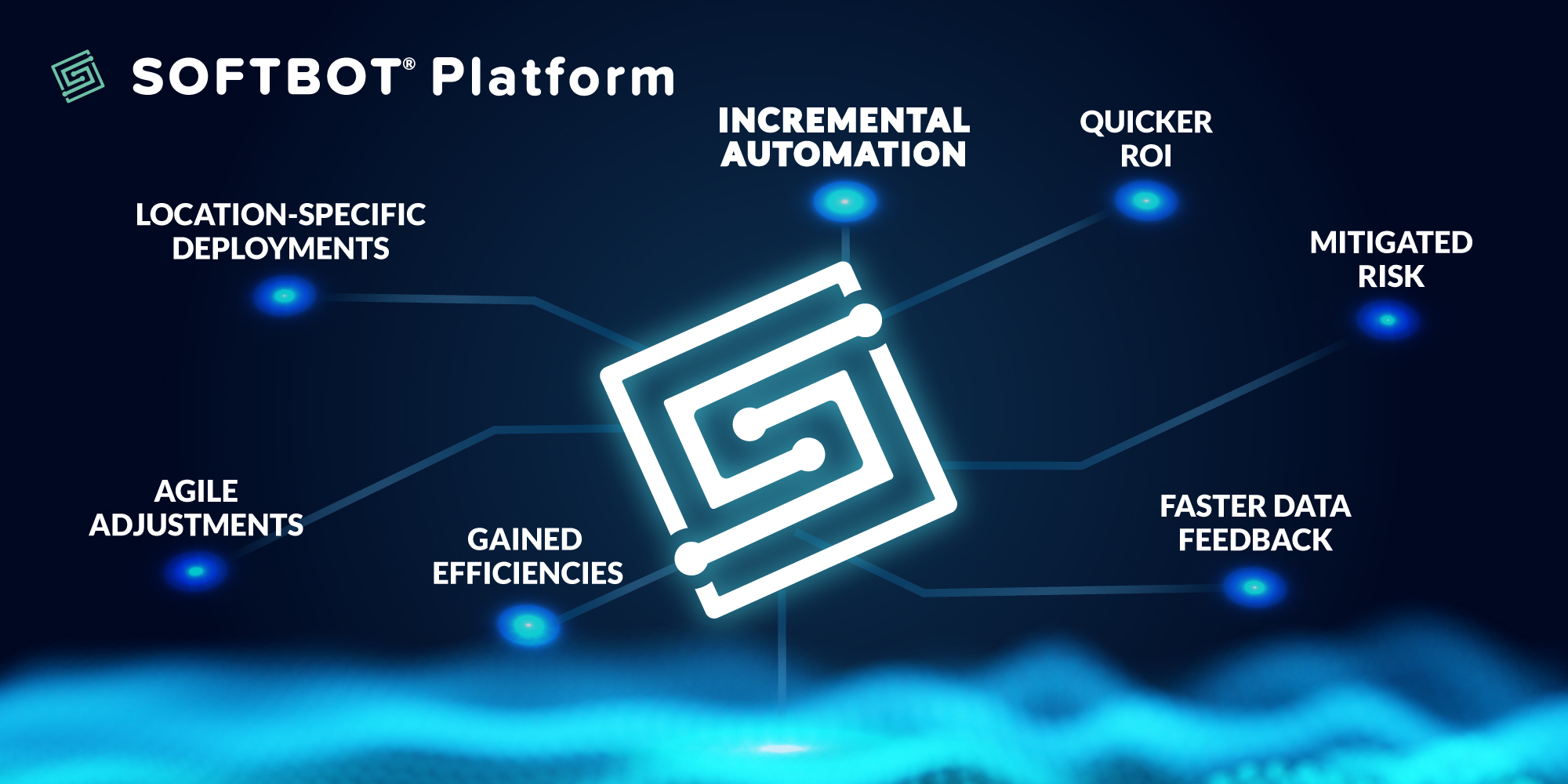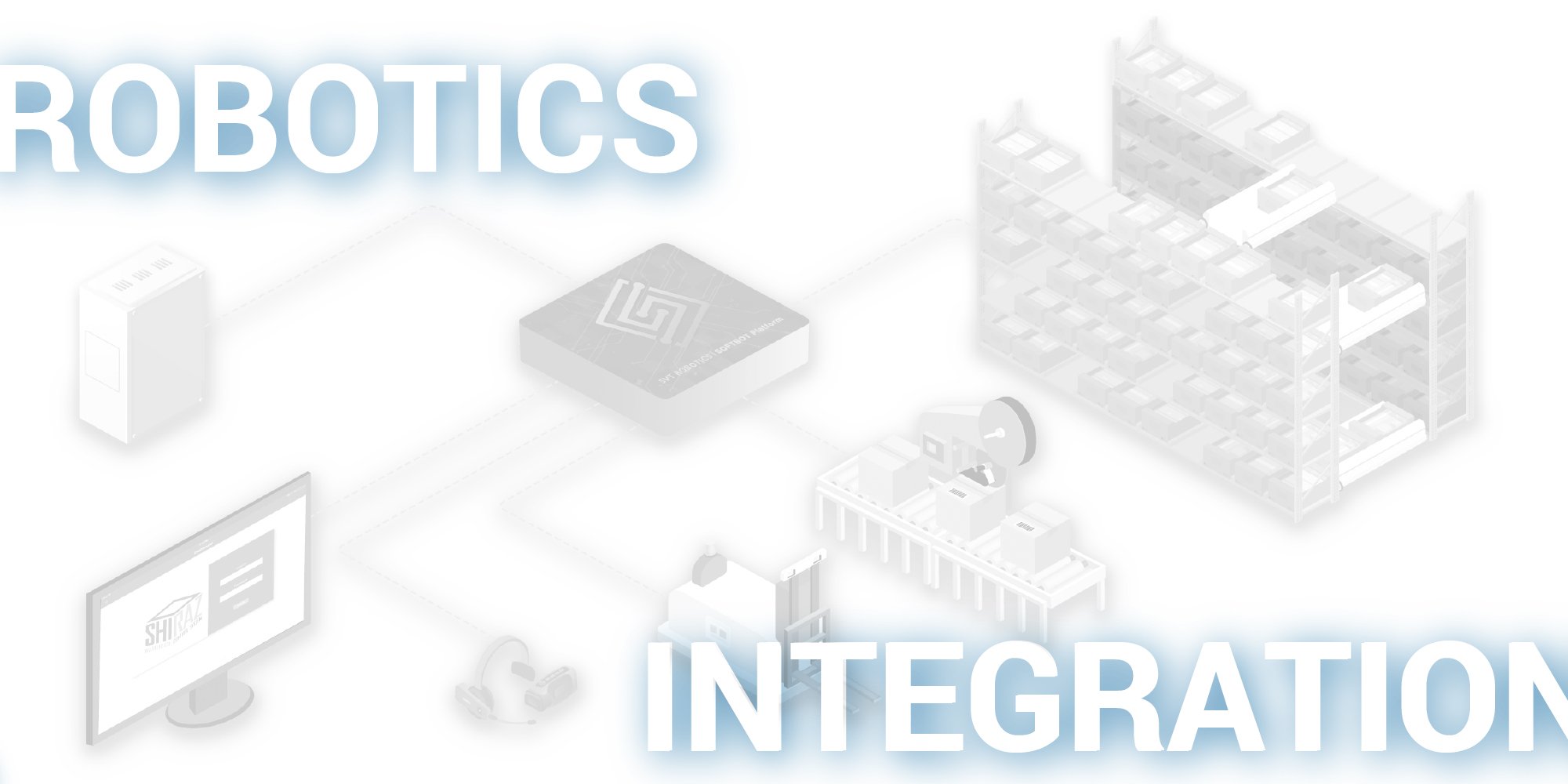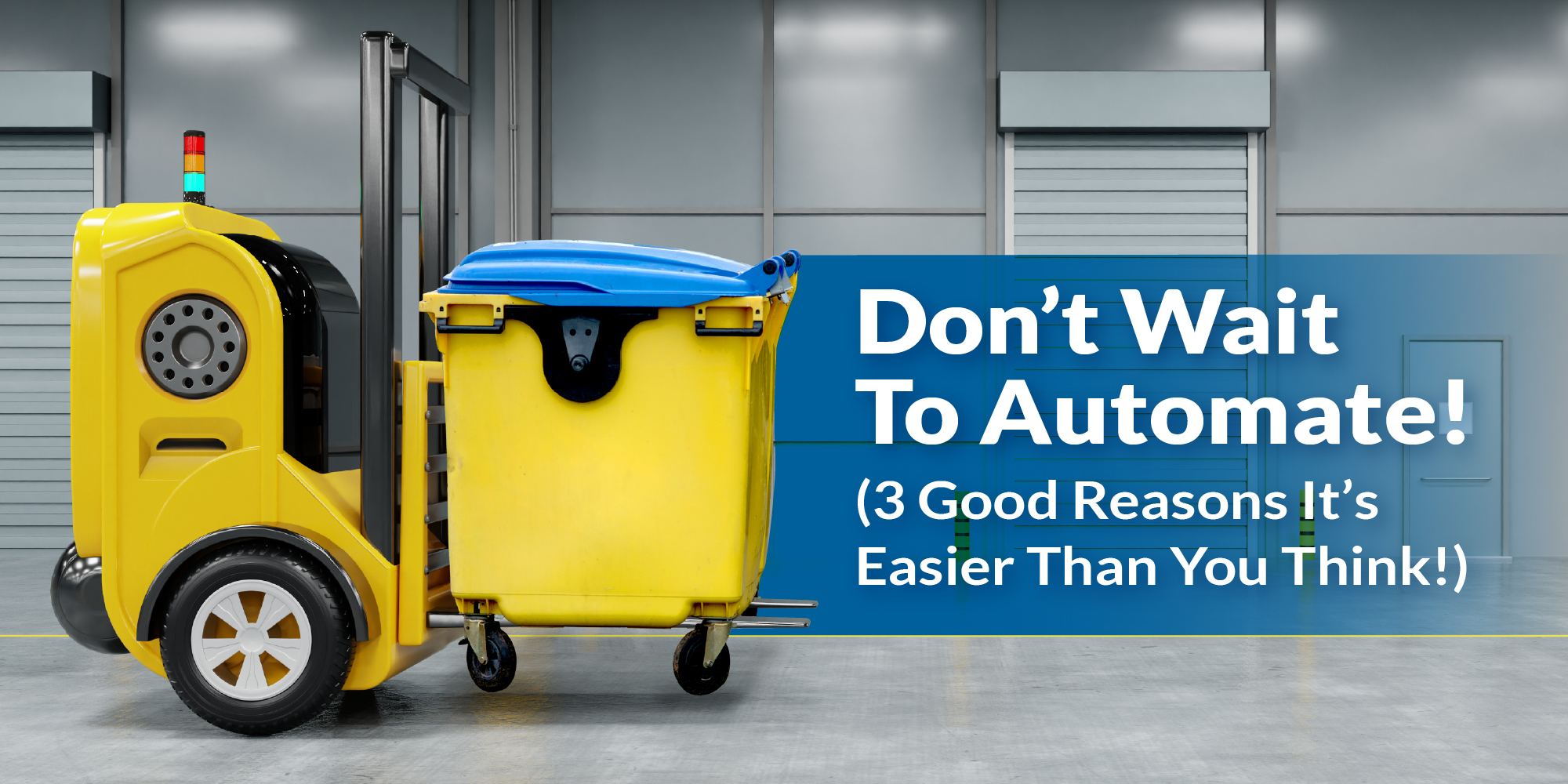There’s a reason that introducing robotics and automation to your operations can seem daunting.
Traditional, long-form automation projects take a long time to plan, implement, and launch, and they’re expensive. With the ever-shifting ground of today’s marketplace, the solutions might be outdated by the time they reach first deployment. That can mean wasted budget and little, if any, ROI.
But not anymore.
By using the SOFTBOT Platform to automate more rapidly at a smaller scale, companies can see faster gains in throughput, efficiency, and optimization of their labor force and inventory and then iterate on that value. These incremental optimizations require much less time and investment, allowing you to consider discrete improvements to specific parts of your supply chain to see productivity gains and ROI goals more quickly.
What are incremental optimizations?
Until recently, deploying automation meant investing in an entire system. That included the robots and software, plus months and months of coding time for piloting, integrating, and scaling. Unintentionally, that behemoth process has perpetuated the notion that automation is still less accessible unless you’re willing to spend months or years, and often millions of dollars, to deploy a static solution that’s inflexible and costly to update as business needs invariably change.
Now, you can begin with smaller automation and achieve ROI much quicker. Companies are no longer required to enter the industry by spending $30 to $40 million on a solution; it’s now possible to consider, let’s say, the gains a $200,000 investment can achieve for more immediate results.
For example, rather than rethinking your entire product retrieval system with AMRs, picking solutions, and inventory tracking, you could gain efficiencies by simply connecting to our SOFTBOT® Platform to quickly and easily deploy IoT devices that monitor trash levels, then use a robot to empty bins when full. That means your fork truck driver who spent valuable time on that task can stay in his picking flow or do work that’s more beneficial to your bottom line.
Once you’ve gained valuable operating experience with AMRs in a non-critical area, you can expand your AMR fleet to do more critical tasks, but at a much lower risk than attempting everything from the beginning.
It goes beyond robotics too. Process automation (like integrating two ERP systems), inventory management software, automated workflows, and time-keeping systems are all automation tools your company can utilize one at a time to improve operations.
Gain efficiencies with little to no risk
One of the biggest challenges companies often face when considering automation is knowing where and which processes to automate — often across different locations with different layouts and demands — to gain the most efficiencies and justify the cost. And until now, that has meant too much risk if they get it wrong. Incremental optimizations simplify this process.
A first step can be utilizing solutions that don’t require you to purchase the automation technology. With RaaS (Robots as a Service) and SaaS (Software as a Service) options, you can lease technology as needed, with little to no lead time, to test and deploy solutions in a timelier manner at a fraction of the cost. If it doesn’t work out or the needs of your supply chain change, you can swap out the technology for robotics or software that can help you with the current issues you’re addressing.
Likewise, you can think locally rather than investing corporate-wide. If one specific site has a long distance from one cross-docking location to another, that site can lease AGVs to make simple point A to point B pick-ups. That means your intelligent workforce isn’t spending time covering those long distances and can use their critical thinking skills somewhere else in the warehouse.
Additionally, there doesn’t have to be a company-wide analysis to incorporate robotics selectively. The need can be unique and perhaps even recognized only by those working in that location — and the cost to automate is low enough to be a regular facility expenditure. Even if only needed for a limited time, the robots can go back to the manufacturer, and you can optimize in a new way.
Faster feedback means agile optimizations
Automation requires data to work effectively — both the data collected before implementation and data gathered once deployed. The more complex the solution, the more data points to be considered and, sometimes, the longer it takes to collect. With smaller, discrete automation solutions, you limit the scale of the data and speed up the feedback loop cycle to ensure the optimizations are doing their job.
As an example, if one ecommerce company decides to introduce a large-scale automation solution at a facility to increase throughput by 40% over the next ten years, the long-form timeline of requirements and data gathering to understand the problem they want to solve means their business needs will likely change during the design timeframe required. By the time they reach the 10-year mark, it will be rare to realize still the goal they had set aside to achieve.
Compare that to another ecommerce company that wants to improve real-time inventory tracking during the holiday shopping season. The latter may only involve integrating new inventory management software into their website, providing online shoppers with accurate info on product availability. If the second company uses an automation orchestration platform, like the SOFTBOT Platform, the software can be integrated quickly with their product retrieval system and website, tested immediately, and adjusted as needed. Because integration is rapid and seamless, the feedback loop is short, and the company will see positive results fast, again, with little to no risk.
Shorter feedback loops like this also improve your ability to stay on pace with the internal and external factors affecting the marketplace today. When there’s a shift in consumer demand, a shortage in supplies, or a sudden increase in online purchases, incremental optimizations inject enhancements that allow you to be agile and maintain value as your business changes.
Easy optimizations with the SOFTBOT Platform
The solution-agnostic, multi-robot orchestration SOFTBOT Platform is the ideal tool for incremental optimizations. Once connected, you can introduce robotics hardware and automation software into your WMS incredibly fast. You can also combine technologies to suit your needs, develop and change workflows quickly, and deploy immediately and at scale if needed. Our platform houses a wide selection of technologies so that you have access to the broadest possible range of solutions. And it gives you a single resource to orchestrate the disparate automation solutions you choose to use so they all work in concert.
If this piques your interest, but you’re wondering where automation could be used incrementally in your operation, talk to us. Our knowledge of automation and supply chains is far-reaching and in-depth as an industry resource. We’re experts in finding new ways for your company to make the best use of automation to serve your operational and financial goals.







